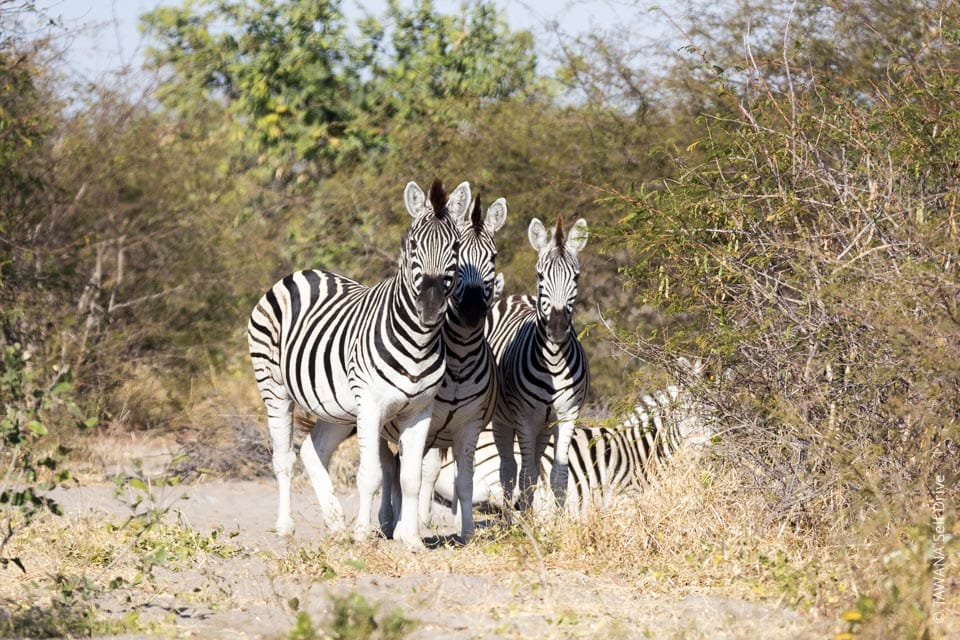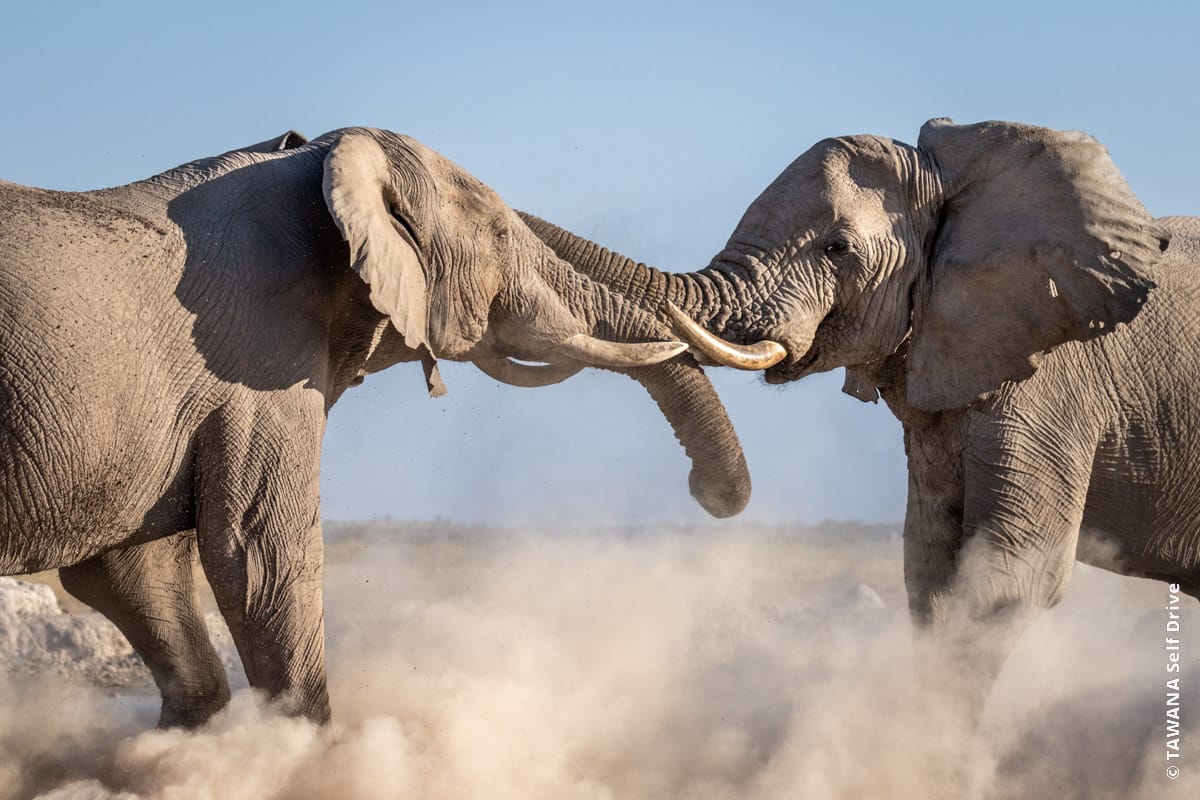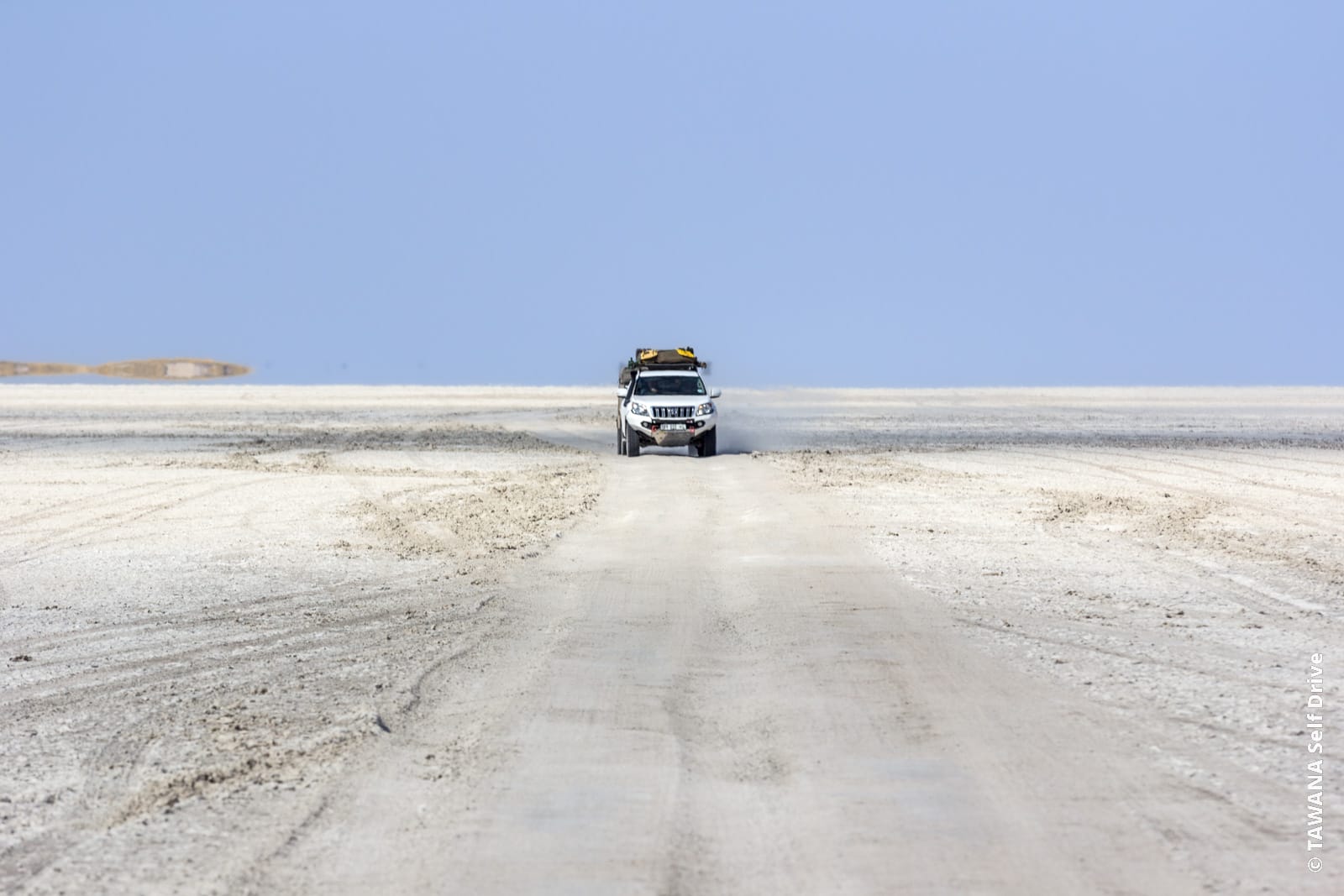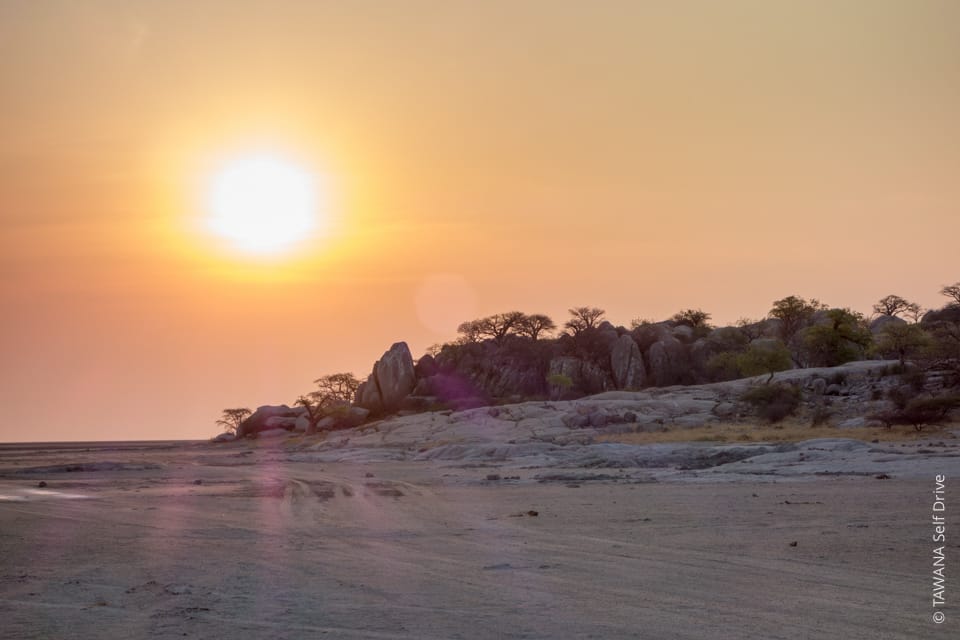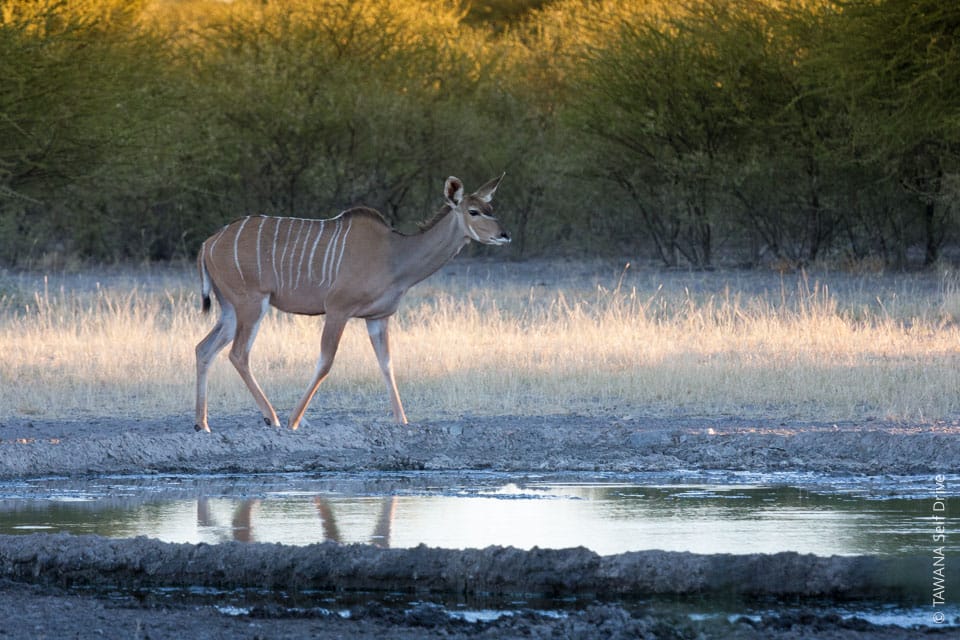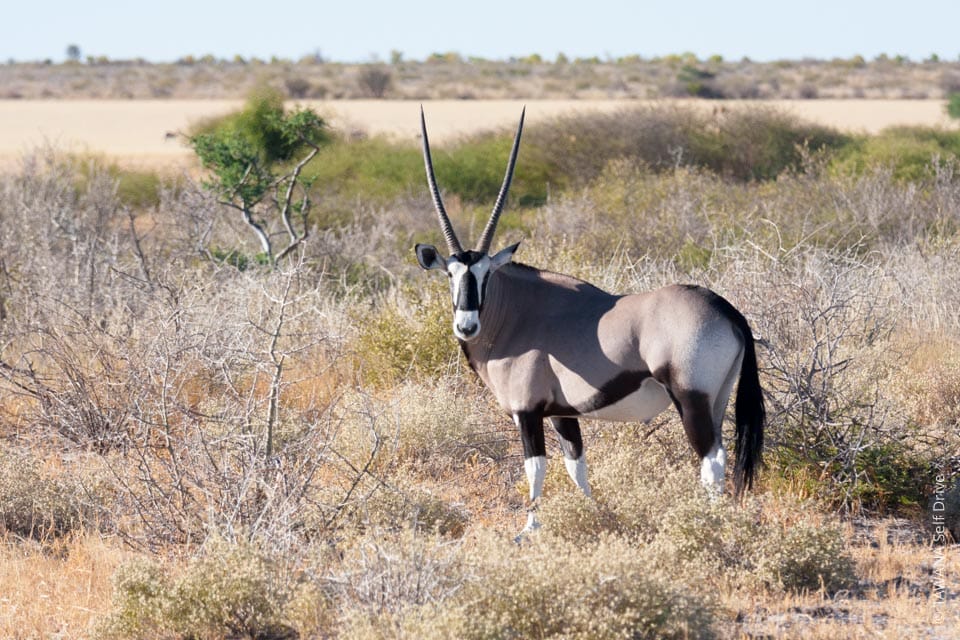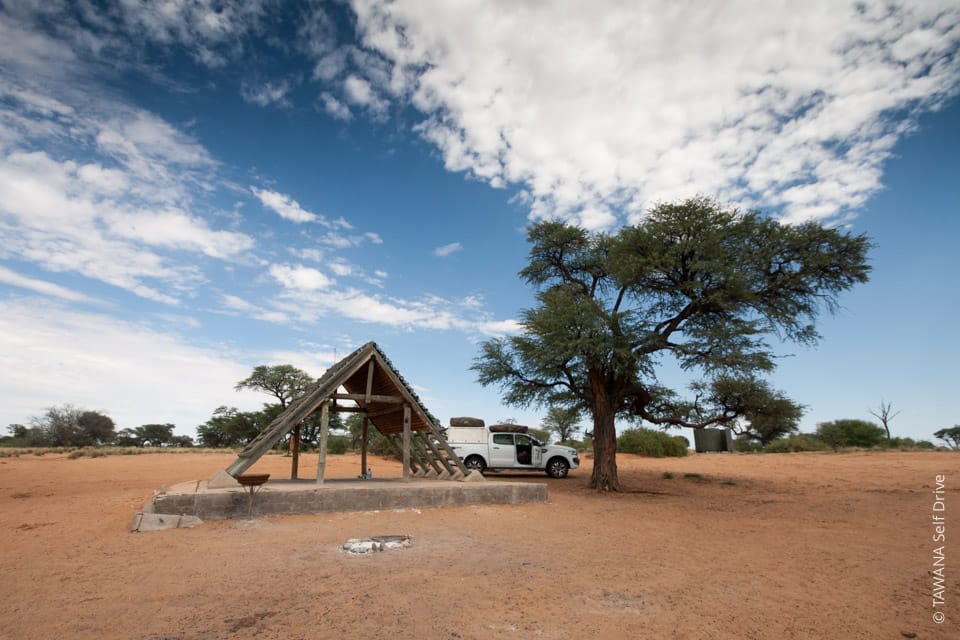The desert Route : the most adventurous self-drive safari in the remote Kalahari
The desert route is an invitation to explore the most isolated areas of Botswana, from the Makgadikgadi pans to Central Kalahari, or up to the Kgalagadi Transfrontier park for the most adventurous!
This self-drive safari focused on the Kalahari part of Botswana will allow you to discover endless spaces such as the cracked ground of the salt pans, the vegetal desert of the Kalahari, the red dunes of the Kgalagadi and all the abundant wildlife existing in these arid environments where one could swear no life is possible.
Maun
Boteti River
Nxai Pan Natinal Park
Gweta
Kubu Island
Central Kalahari GR
Kgalagadi TP
SUMMARY
Destination: Botswana
Duration: 14 to 21 days
Starting point: Maun or Kasane
Accommodation: Camping and/or Lodge
Baines Baobab, Nxai Pan, Botswana
STEP BY STEP
The self-drive 4×4 tour of the Kalahari starts in Maun, but a similar tour can also be organised from Kasane.
The first stage of this epic journey through the Kalahari Desert takes you to the heart of Botswana, in the region of the great salt lakes. Here, the Nxai Pan and Makgadikgadi National Parks immerse you in a typical landscape alternating between wide basins and shrubby plains ideally located on the migratory routes of large herbivores.
Although they are like brother and sister, each park offers a complementary safari experience. On one side, the Boteti River attracts zebras, wildebeests and elephants during the dry season. On the other, the Nxai pans transform into a green oasis popular with herds during the wet season. Between these two environments and in all seasons, predators find their place, watching for the right opportunity by the river or around waterholes.
BOTETI RIVER
The Boteti River runs along the western edge of Makgadikgadi National Park. Fed by the floods of the Okavango, it is a crucial source of water for animals living or migrating in this desert area, which replaced a huge prehistoric lake. As in Savuti, the river has remained dry for many years, leaving only a few permanent pools here and there. Since 2009, the water has come and gone depending on the year. However, zebras still gather around May in this magnificent setting, where you can observe all the fascinating wildlife of Botswana: elephants, giraffes, zebras, lions and a myriad of birds.
Venturing a little deeper into the park, you will discover an environment that is in stark contrast to the green banks of the river. The Ntwetwe pan is one of the largest in the region. In the dry season, its cracked expanse is strikingly white and attracts specific wildlife adapted to these arid conditions, such as ostriches, oryx, meerkats, and even the very rare brown hyena.
NXAI PAN
Nxai Pan National Park is home to the famous Baines Baobabs, a small natural gem overlooking a wide pan and vast plains. Discovered in the 19th century, they were immortalised by explorer Thomas Baines in one of his paintings, such was the remarkable beauty of the place. Its magical atmosphere is revealed in full at sunrise, when the sun’s rays bathe the tree trunks in red, contrasting perfectly with the pristine white of the Kudiakam pan.
Although the baobab region is not very popular with animals during the dry season, the Nxai and Kgama-Kgama pans are home to a permanent fauna consisting of lions, giraffes and elephants, as well as species adapted to more arid environments such as springbok, bat-eared foxes and jackals. They are a regular crossing point for migratory animals, which flock to seasonal waterholes as soon as the first rains arrive. At this time of year, it is possible to see thousands of zebras and wildebeests, as well as large herds of springboks and oryx.
During the dry season, the wildlife in Nxai is more sporadic than in other parks in Botswana. However, there is a good chance of seeing cheetahs all year round, and the central artificial waterhole continues to attract many animals.
GOOD TO KNOW
- Accommodation: The Makgadikgadi and Nxai National Parks each have a public campsite, as well as isolated sites at Baines Baobab. Mobile safari operators work at specific sites in both parks. There is a high-end lodge at Nxai Pan and various options along the Boteti River on the edge of the park. Lodges and campsites are available in Nata and the surrounding area.
Supplying: Nata has a small supermarket and several petrol stations. There are a few convenience stores in Gweta and a fuel station.
Roads: Tarred road to the entrance of the two parks, then sandy tracks that are generally very deep once you have passed the gates.
Covering an area of 12,000 square kilometres, the Makgadikgadi pans are a series of salt-bleached basins. They form one of the largest salt marshes in the world, interspersed with splendid rocky islands, the most iconic of which is Kubu Island.
Dotted with villages and livestock farms, one might easily think that this seemingly hostile region is devoid of wildlife. However, animals are very much present, mainly during the wet season, when the two largest basins, Ntwewe and Sowa, are fed with water and their edges are covered with vegetation. Large herbivores, zebras and wildebeests then invade the plains, while impressive colonies of flamingos settle on the newly formed lakes.
In the middle of this flat expanse stand a few massive baobab trees, some of which are part of history, such as Green’s Baobab or the now-defunct Chapman’s Baobabs south of Gweta.
GWETA OR NATA
After a first stop in the Nxai and Makgadikgadi National Parks, you may wish to consider a stop in Gweta or Nata. This is an opportunity to explore the Ntwetwe Pan in greater depth or discover the other side of Sowa Pan at the Nata Bird Sanctuary.
South of Gweta are some famous baobab trees. Green’s Baobab takes visitors back to the 19th century when the Makgadikgadi pans were on the route of merchants, explorers and missionaries who stopped under this enormous tree to spend the night. The Green brothers inscribed the words ‘Green’s Expedition, 1858-1859’ on it, which gave the baobab its name.
A little further on is the impressive Chapman’s baobab, composed of seven trunks, which also earned it the name ‘Seven Sisters’. Many names were inscribed on it, including that of South African explorer James Chapman, mentioned by the initials JC, and probably inscribed by himself in 1861 while on an expedition with his brother and Thomas Baines. Unfortunately, this giant of history was uprooted in 2016 and has now almost disappeared.
Near Nata, the Bird Sanctuary provides access to the north-eastern part of Sowa Pan. Depending on the year, this part of the pan can still form an impressive lake that attracts many birds such as flamingos and pelicans, even in the dry season.
KUBU ISLAND
From the Setswana word meaning ‘ridge’, Kubu Island (or Lekhubu Island) is a rocky island 10 metres high and 1 kilometre long, on which magnificent baobab trees have grown, creating an unexpected and particularly photogenic setting on the edge of Sowa Pan.
Spending a night here is one of those magical and unforgettable moments, especially under a full moon. Photographers will delight in the opportunities offered by the starry skies, the reflection of the pans and the shapes of the baobab trees.
LETLHAKANE
After several days in the heart of the Makgadikgadi pans, a refuelling stop is necessary before continuing on to the Central Kalahari. Letlhakane is a small town with little to offer, which has developed thanks to the three diamond mines surrounding it. Although it is gradually opening up to tourism, we mainly stop here to take a nice shower, rest and refuel for the rest of this 4×4 itinerary through the Kalahari.
GOOD TO KNOW
Accommodation: Kubu Island only has a minimalist campsite with around ten pitches. Various accommodation options are available in Gweta, Nata and Kasane, including lodges, self-catering accommodation, bush camps and campsites.
Supplying: Letlhakane now has a shopping centre with a well-stocked supermarket, cash machines and petrol stations. Nata has a small supermarket and petrol stations where you can stock up on supplies. Supplies are much more limited in Gweta.
Roads: in the pans, the terrain alternates between dusty dirt tracks and sandy tracks. There are no particular difficulties, but it can be tricky to find your way around and get your bearings.
It was not until 1998 that the Central Kalahari reserve was open to individual tourism and self-drive safari.
It is one of the most natural places in Africa, where fauna and flora have developed freely in the heart of the semi-arid region, which doesn’t rain more than 300 mm of water per year. However, it is not expected to discover sand dunes but rather a vast plateau stretching as far as the eye can see while covered with vegetation of herbs and shrubs, the definition of this typical plant desert.
Moreover, animals are not mistaken and gather here soon after the rainy season in order to benefit from the best pastures that the region has to offer. Whether later or this time in the dry season, the untouched Kalahari Desert will leave no one indifferent to its fauna, landscape and the almost magical atmosphere that reigns there. In order to be completely enchanted by the charms of Kalahari, we recommend that you should travel the northern half of the reserve for minimum of 5 days.
SUNDAY PAN AND LEOPARD PAN
Sunday Pan is one of the most beautiful area in the CKGR. It is renowned for the regular presence of the famous black-maned lions of the Kalahari, and its acacia trees are home to numerous herbivores such as wildebeest, oryx, kudu and giraffes. The bushes may also hide a few bat-eared foxes, jackals or honey badgers.
The permanent waterhole at Sunday is a must-see spot when the sun goes down, and it is always interesting to see the animals arrive in a well-defined order.
PASSARGE VALLEY AND TAU PAN
Passarge Valley is a scenic route through the typical Kalahari bush vegetation, interspersed with open valleys, vast grasslands, and dotted with small wooded islands. Tau Pan is distinguished by its clusters of acacia trees surrounding a huge basin that is highly prized by herbivores, followed by predators that also sometimes appear around the slopes of Phukwe, San and Phokoje.
PIPER PAN
Piper Pan is the most remote place on the northern loop and also the most mystical. Here, you really feel how far away you are. The silence is surprising. The isolation is complete. Yet many animals frolic happily in the vast plains, which are emerald green in the wet season and tinged with gold in the dry season.
LETIAHAU AND DECEPTION VALLEY
The Letiahau and Deception valleys are undoubtedly the most interesting in the Central Kalahari. It is here that you have the best chance of spotting the shyest animals of the savannah, such as cheetahs and brown hyenas. But that’s not all: the permanent waterhole at Letiahau also attracts giraffes and other herbivores, and lions are often seen in this area.
Deception Valley alone is worth the trip to the remote Kalahari. A former fossil river bed, the place takes its name from a mirage created by the clay basin, which gives the illusion of a pond filled with water. Deception Pan does indeed fill with water during the rainy season, but quickly gives way to cracked earth covered with dried red algae for the rest of the year.
GOOD TO KNOW
Accommodation: The Central Kalahari has around twenty individual campsites, some of which are very isolated. Two lodges operate within the reserve and four others in private concessions on the outskirts, including the popular Dinaka and Deception Valley Lodge. Mobile safaris have reserved sites in Deception Valley.
Supplying: Maun, then Rakops, where you can fill up with petrol and stock up on supplies in fairly basic grocery stores.
Roads: the paved road gives way to rough dirt tracks about 40 km from each gate. Within the reserve, driving conditions are fairly good, except for a few sections that can be very sandy.
KGALAGADI TRANSFRONTIER PARK
Created in 2002 and jointly managed by South Africa and Botswana, the Kgalagadi Transfrontier Park is a vast open desert covering 37,000 km2 that protects animal migration routes, which are crucial to their survival in this arid region.
Three-quarters of the park is located in Botswana and has retained its authenticity with very basic facilities. On the South African side, the infrastructure is more developed, with camps that have become veritable tourist villages.
Characterised by its red sand on the South African side and its vast plains on the Botswana side, the Kgalagadi is adorned with grassy and flowery vegetation as soon as the rains return. Despite the lack of natural water and thanks to artificial water points, the desert remains a living place, populated by oryx, springboks, hartebeests and elands. Carnivores are very present, including lions, cheetahs, leopards, brown hyenas and jackals. But the KTP is also home to small mammals, and you will enjoy encountering Cape foxes, ground squirrels, meerkats, bat-eared foxes and honey badgers.
The Botswana side of the Kgalagadi is a 100% self-drive destination, ideal for those who like to take the time to seek out rarer sights and who particularly appreciate the simple life in the bush.
Need some advice?
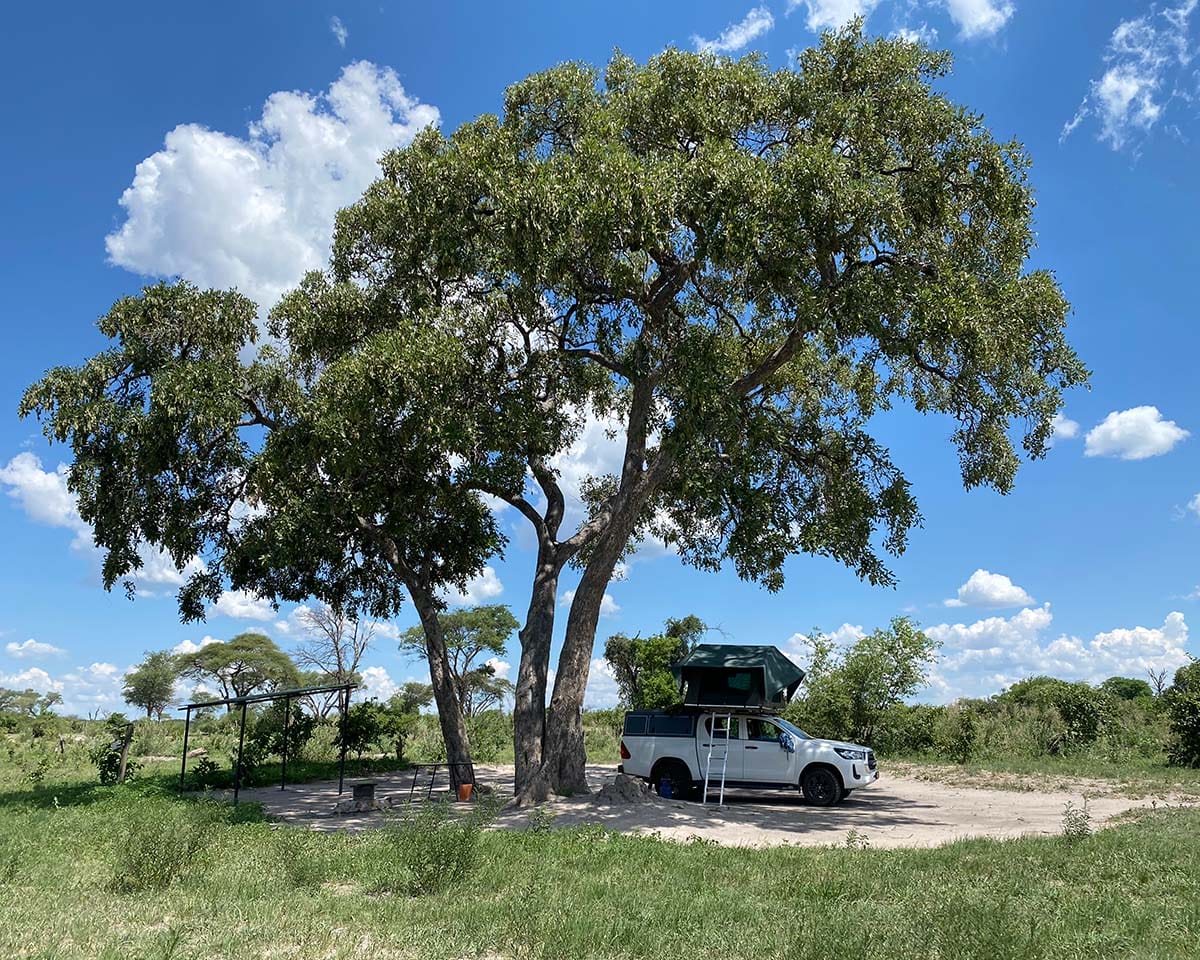
or call us
+267 7752 8837
Whatsapp vocal, monday to friday, from 9h to 17h
WHY CHOOSE THE KALAHARI 4×4 trip?
Discover the country driving East to West through open landscapes, with the opportunity to encounter a rare wildlife
The raw and wild experience of an adventure itinerary in a 4×4, particularly suitable for experienced selfdrivers.
A possible extension to the Kgalagadi Transfrontier park for a complete expedition to the heart of the arid lands of Botswana
LIVE UNFORGETTABLE EXPERIENCES
Travelling through the desert regions of Botswana is a meaningful adventure that takes place in minimalist conditions. Treating yourself to a little luxury and comfort during your trip is often welcome. It is also an opportunity to choose activities that will make this experience even more special for you!
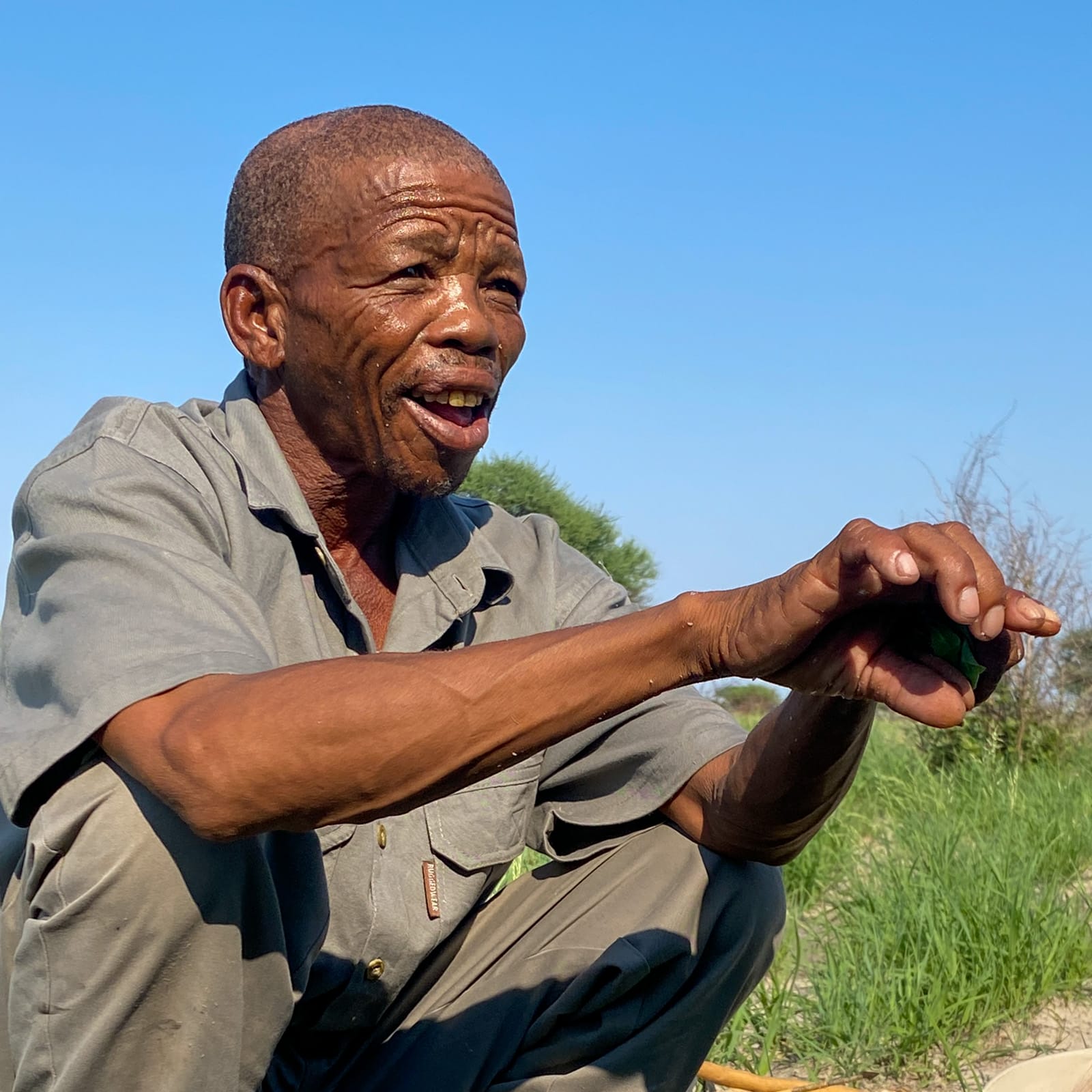
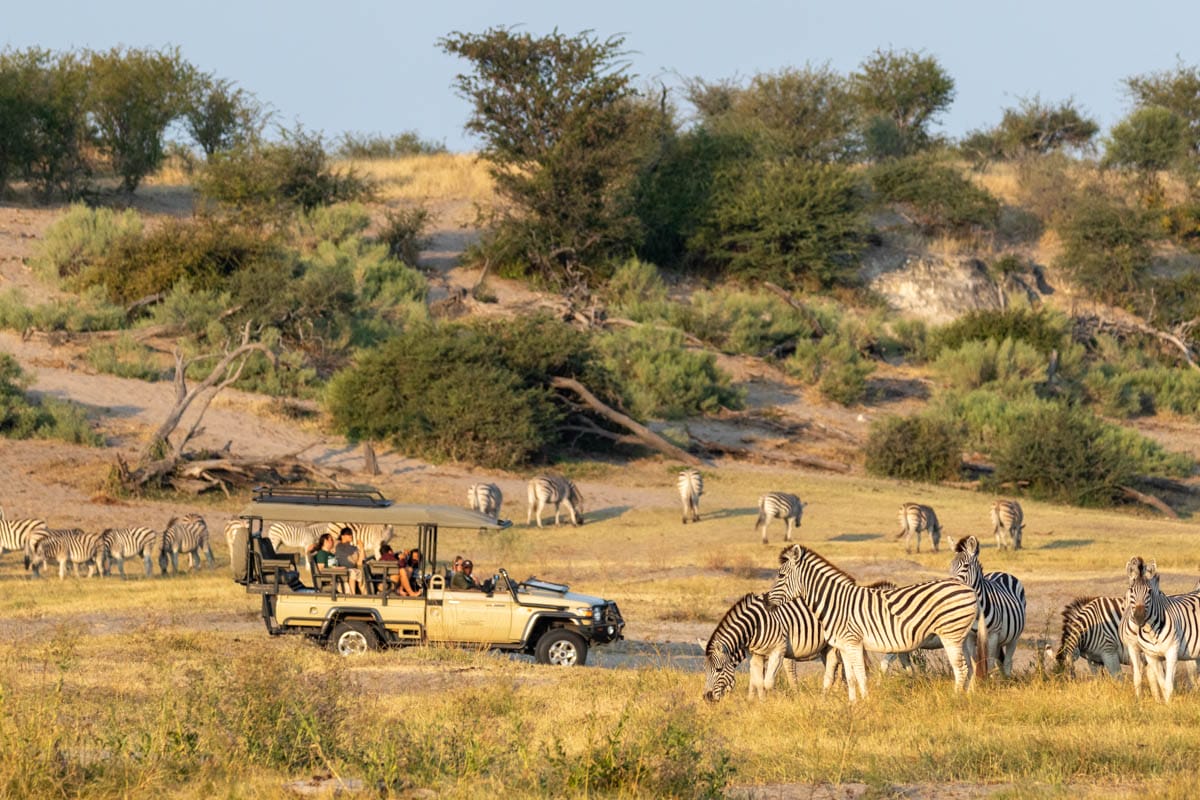
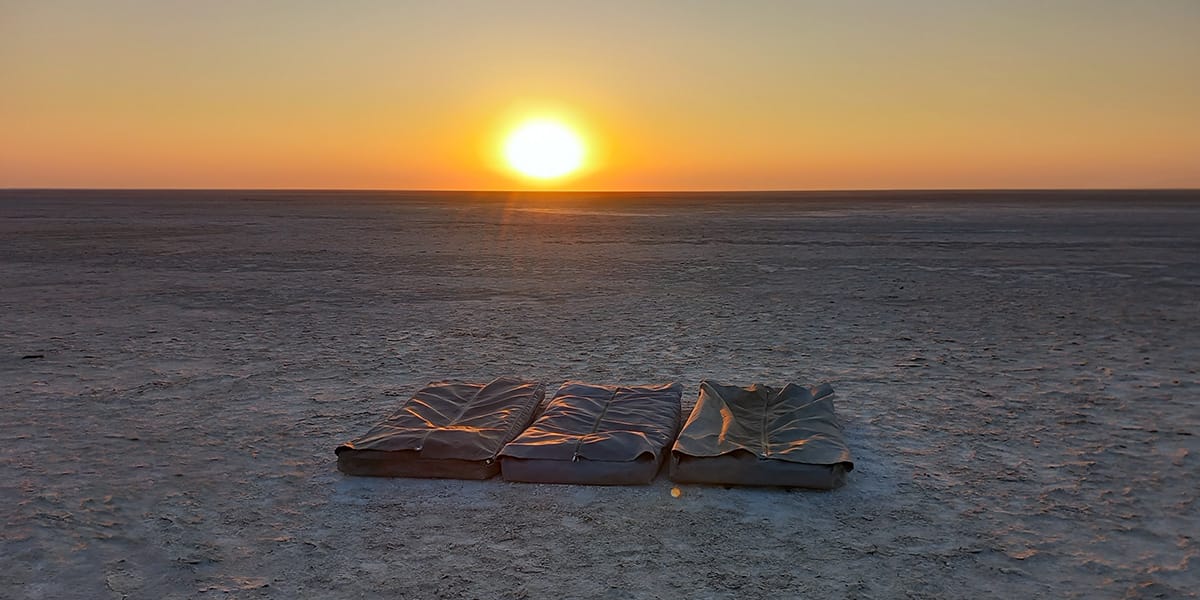
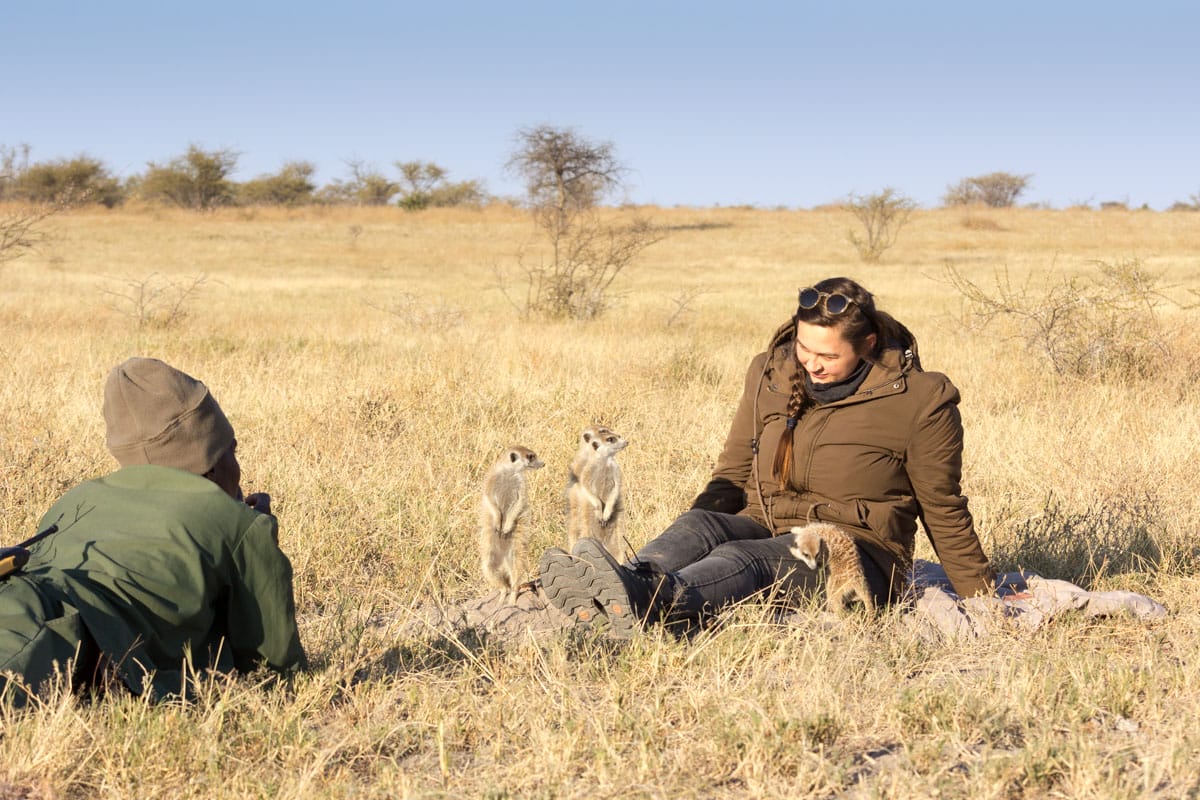
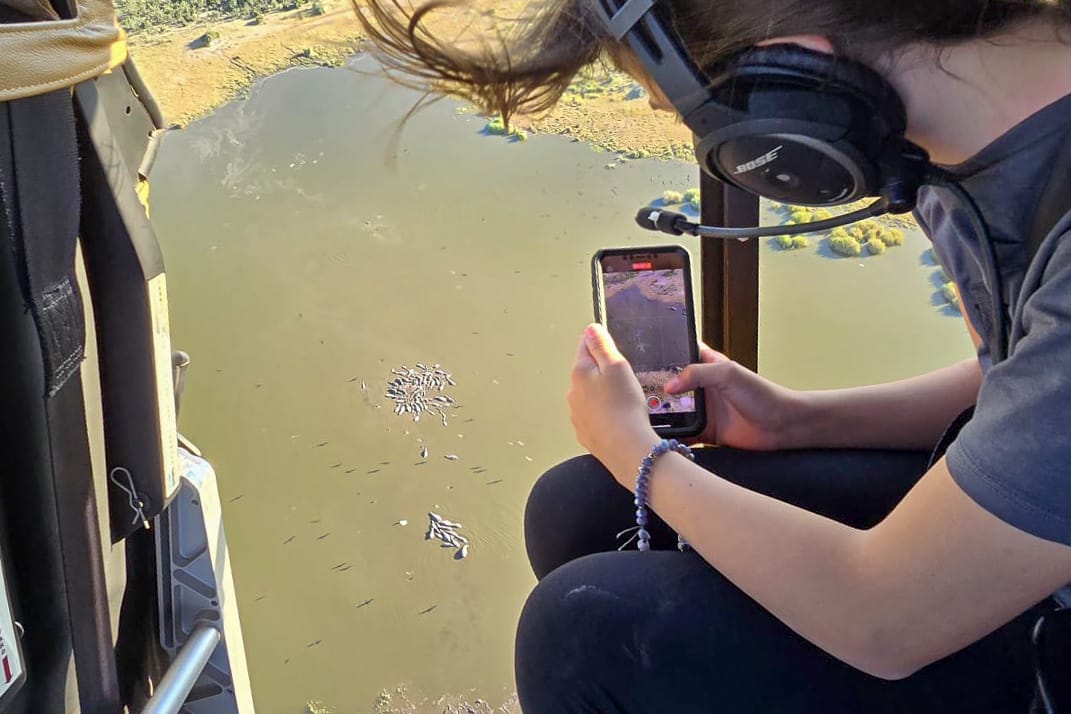
Exploring new horizons
JOHANNESBURG • WATERBERG • TULI • RHINO SANCTUARY • BOTETI • MAKGADIKGADI PANS • CHOBE • VICTORIA FALLS
OKAVANGO PANHANDLE • ZAMBEZI • CHOBE • NXAI & MAKGADIKGADI • VICTORIA FALLS
JOHANNESBURG • WATERBERG • TULI • RHINO SANCTUARY • BOTETI • MAKGADIKGADI PANS • CHOBE • VICTORIA FALLS
OKAVANGO PANHANDLE • ZAMBEZI • CHOBE • NXAI & MAKGADIKGADI • VICTORIA FALLS



